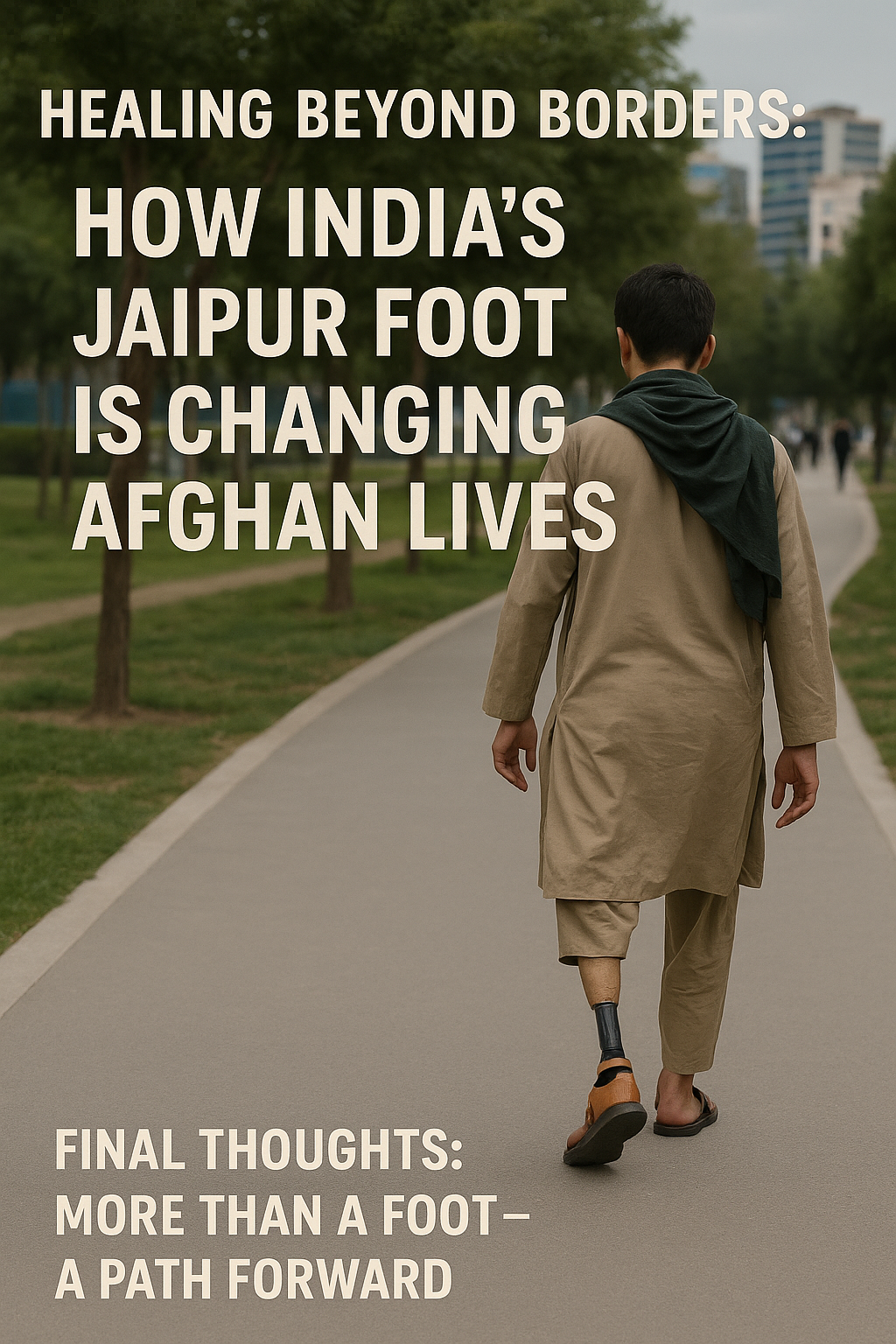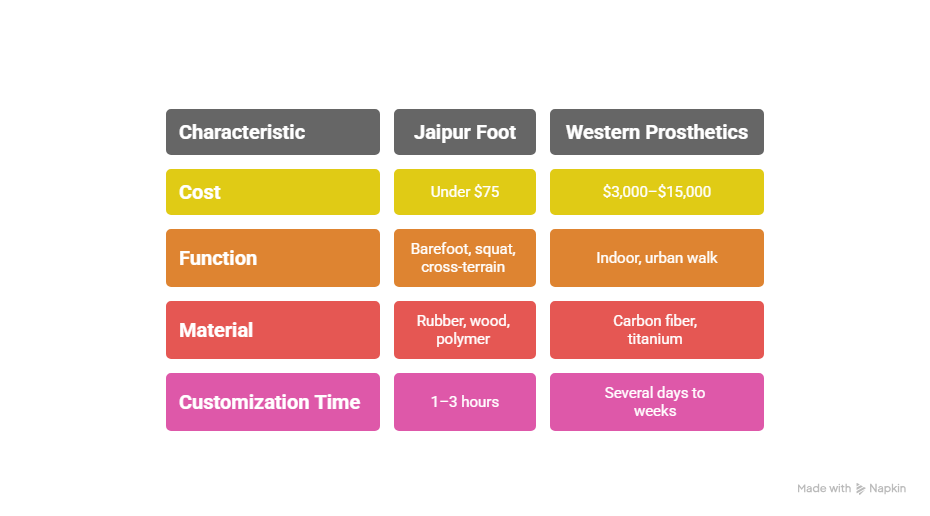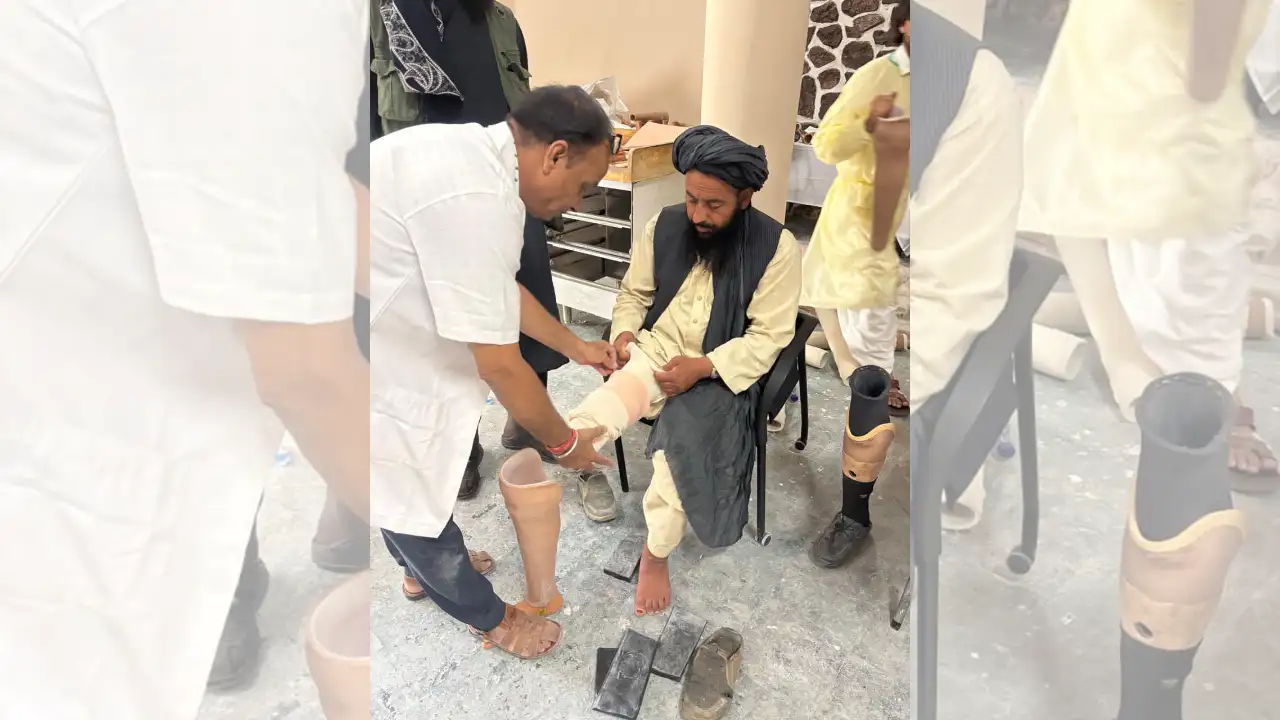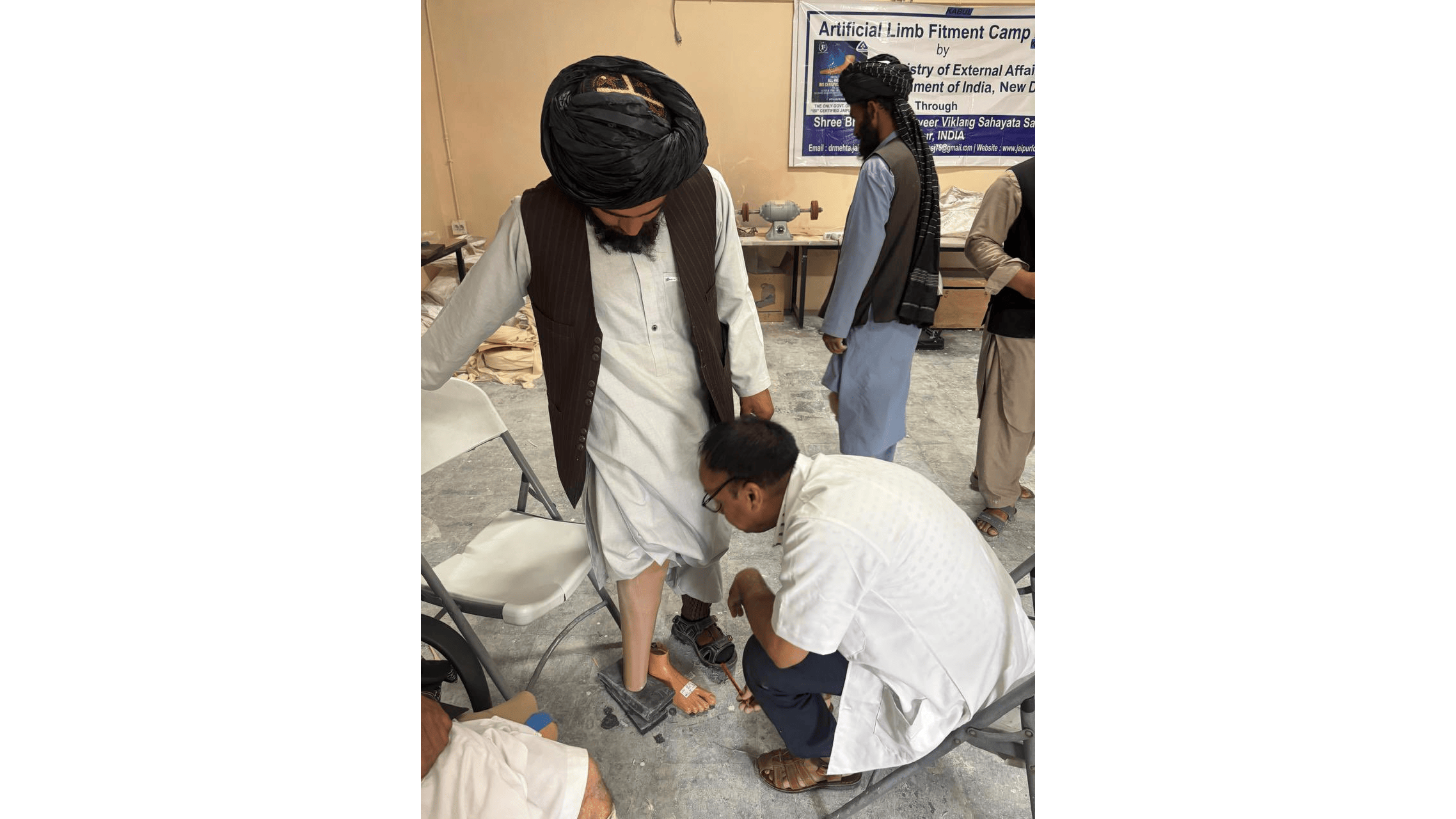Healing Beyond Borders: How India’s Jaipur Foot is Changing Afghan Lives
India’s Jaipur Foot brings mobility and dignity to Afghan amputees while boosting India’s soft power. Explore the emotional, technological, and geopolitical impact of this humanitarian initiative.

KABUL, July 2, 2025
In a country scarred by decades of war, thousands suffer from serious injuries. A quiet change is happening. The Jaipur Foot, India’s innovative prosthetic limb, provides Afghan amputees not just with mobility, but a fresh start.
In a five-day camp held in June 2025, 75 Afghan civilians received new limbs along with emotional support through a charity mission backed by India’s Bhagwan Mahaveer Viklang Sahayata Samiti (BMVSS). This account of resilience, technology, and diplomacy shows how a simple invention is changing lives, communities, and international relations.
"I Can Walk Again": Afghan Lives Rebuilt, Step by Step
Afghanistan has over a million amputees. Many lost limbs due to landmines, IEDs, airstrikes, and untreated medical conditions. Medical facilities are lacking, especially following the Taliban's takeover in 2021. This makes foreign aid and international partnerships essential.
“Before Jaipur Foot, I crawled. Now, I can walk to school with my daughter,”
— Fatima, a 35-year-old amputee and Kabul resident.
For people like Fatima, dignity is more than just medical recovery; it’s about a mental rebirth. Each patient at the camp received personalized support, fitting, gait training, and motivational counseling, highlighting the personal aspect of rehabilitation.
The Family Impact
When one family member loses mobility, the whole household is affected—children may drop out of school, and caretakers can lose their jobs. Restoring independence to one person empowers entire families. That’s the ripple effect of this program.
The Science of Simplicity: Jaipur Foot as a Technological Disruptor
The Jaipur Foot is not complex; it’s practical, flexible, and made for tough conditions.

Invented in 1968 by Dr. P.K. Sethi and craftsman Ram Chander Sharma in Jaipur, it allows users to walk, run, squat, and work in fields or uneven terrains—features that most expensive, rigid Western prosthetics cannot provide.
"It's not just a limb. It's a philosophy—low cost, high dignity,"
— Devendra Raj Mehta, Founder, BMVSS (source).
India's Medical Diplomacy in the Taliban Era
In Taliban-controlled Afghanistan, many countries have pulled back their diplomatic relations. India evacuated its Kabul embassy in 2021 as well. However, through indirect humanitarian routes and NGOs, India keeps helping Afghan civilians. The Jaipur Foot camp in June 2025 was officially requested by Afghan authorities and carried out with careful coordination.
This program allowed New Delhi to rebuild goodwill without direct contact with the Taliban regime. It’s a clever way of doing non-political diplomacy, strengthening India’s image as a humanitarian partner in the region.
Symbolism of Healing: Hope in Conflict Zones
The Jaipur Foot camp is more than just a medical effort—it represents hope. In a landscape of damaged hospitals, absent doctors, and ruined infrastructure, skilled Indian volunteers arriving with boxes of limbs deliver a powerful message.
“India gave us medicine when we had none. They helped our children study. Now they’ve given our people the gift of walking again,”
— Dr. Hamidullah, director at Indira Gandhi Children’s Hospital, Kabul.
Through initiatives like this, India is rebranding itself—not as a military power, but as a compassionate neighbor providing solutions.
Global Footprint of Jaipur Foot
The Kabul camp is just one of many efforts. Under the “India for Humanity” initiative, the Jaipur Foot has been implemented in over 40 countries.
- Rwanda (2018): 500 limbs fitted
- Syria (2019): Camps during ceasefires
- South Sudan, Bangladesh, Kenya, Mexico: Ongoing programs
- UN-ECOSOC: Consultative status granted to BMVSS
- Recognized by WHO, USAID, Red Cross
This reach positions India as a moral leader in global healthcare, especially in areas with limited resources or in conflict.

Economic Diplomacy through Health Innovation
India’s foreign aid budget for Africa and Afghanistan often highlights infrastructure projects. However, medical aid, especially high-visibility efforts like Jaipur Foot, gains significant attention.
Cost per camp: $10,000–$30,000
Number of people helped per camp: 50–100 amputees
Global media coverage & goodwill: Immeasurable
As the world debates between "smart aid" and "strategic aid," Jaipur Foot embodies both. It serves as an affordable tool for foreign policy, with goodwill, narrative control, and diplomatic advantage as returns on investment.
Rehabilitating Societies: Disability, PTSD & Civil Re-entry
Amputees often face:
- Depression
- PTSD
- Social exclusion
- Economic dependence
By fitting limbs and providing post-prosthetic therapy, India helps lessen disability stigma, restore mental health, and speed up economic reintegration.
A farmer who lost a leg to a mine can now:
- Rejoin the workforce
- Stop relying on family for movement
- Regain pride in the community
This change impacts not just individuals, but entire social networks affected by war and trauma.
India’s Soft Power Pivot: Strategy Beyond Borders
While China builds infrastructure across Asia, India is creating emotional ties. Jaipur Foot is now a key example of soft power, allowing New Delhi to:
- Influence regional stories
- Avoid contentious politics
- Enter conflict zones credibly
“No one fears a prosthetic. Everyone welcomes healing,”
— Amb. Gautam Mukhopadhyay, former Indian envoy to Kabul.

The Next Step: A Permanent Jaipur Foot Center in Kabul?
After the success of the 2025 camp, Indian and Afghan agencies are discussing:
- Setting up a permanent Jaipur Foot center
- Training Afghan technicians to operate locally
- Offering India-funded scholarships for prosthetic technology training
This suggests that even with cautious diplomatic relations, humanitarian efforts continue to thrive.
What Happens Next?
Challenges
- Security risks to Indian volunteers
- The unpredictable stance of the Taliban on foreign aid
- Gaps in infrastructure (electricity, 3D scanning, fitting tools)
Opportunities
- Jaipur Foot Centers in Herat and Kandahar
- Collaborations with African nations
- Recognition from WHO as a "Model for Mobility Aid in Conflict Zones"
A Footstep Toward Peace: India's Quiet Revolution in Humanitarian Aid
Jaipur Foot is more than just a prosthetic. It represents India's moral journey. As Afghan recipients take steps again, they carry forward a story of healing, hope, unity, and transformation.
Through this simple device, India moves quietly but leaves a significant mark on the lives it impacts.
Can a Prosthetic Redraw Diplomatic Boundaries?
Can tools like Jaipur Foot help India become a global leader in humanitarian diplomacy, even in politically hostile regions like Taliban-run Afghanistan?
Sources
- Jaipur Foot Official Site – BMVSS
- Times of India – Kabul Prosthetic Camp Coverage
- The Tribune – Humanitarian Outreach by India
- Wikipedia – Jaipur Foot Overview
- The Print – UN Recognition of Jaipur Foot
- ICRC – Red Cross on Limb Fitting
- Image Credits: Times of India, The Tribune, Deccan Herald, SSBCrack, NE Herald via open-source press visuals and humanitarian outreach galleries.




